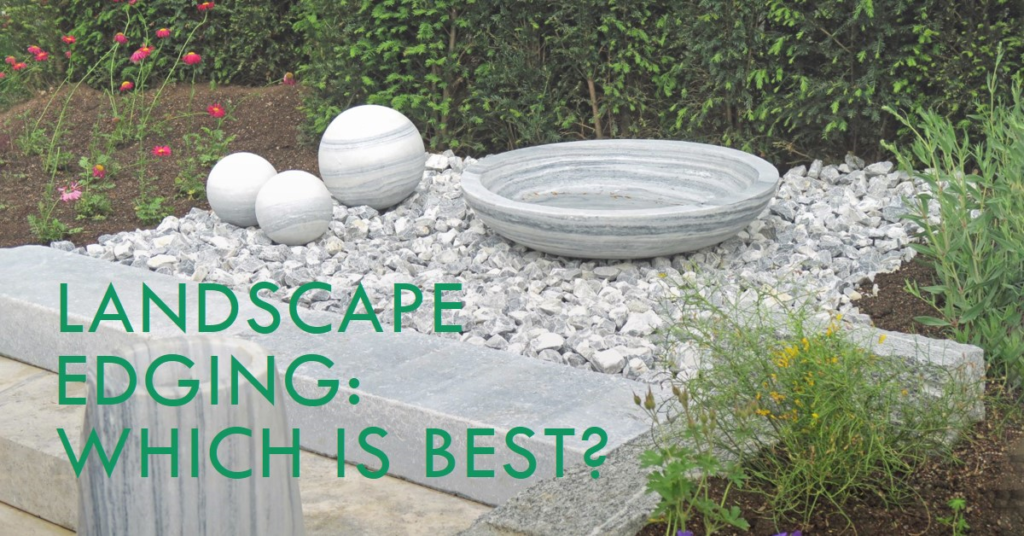
Table of Contents
- Introduction
- 1. Understanding the Importance of Landscape Edging
- 2. Exploring the Types of Landscape Edging
- 3. Natural Stone Edging for a Timeless Look
- 4. Brick Edging for Classic Charm
- 5. Wooden Edging for a Natural Feel
- 6. Concrete Edging for Modern Elegance
- 7. Choosing the Right Edging for Your Garden
- 8. DIY vs. Professional Installation
- 9. Conclusion: Enhancing Your Garden with the Perfect Edging
Introduction
Creating a beautifully landscaped garden involves many elements, but one of the most crucial is landscape edging. Proper edging not only enhances the visual appeal of your garden but also helps in maintaining clean lines and preventing the encroachment of grass and weeds. With various options available, selecting the best landscape edging for your garden can be a daunting task. This guide will help you navigate through the different types of landscape edging, allowing you to make an informed decision that suits your garden’s needs and aesthetics.
1. Understanding the Importance of Landscape Edging
Landscape edging serves both functional and aesthetic purposes. Functionally, it creates a clear separation between garden beds, lawns, and pathways. This separation helps in preventing the spread of grass and weeds into flower beds and other areas. Additionally, it makes maintenance tasks such as mowing and trimming easier and more efficient.
Aesthetically, landscape edging defines the garden’s structure, adding a polished and professional look. It can enhance the visual appeal of your garden by creating clean lines and emphasizing the design elements. Whether you have a formal garden or a more naturalistic style, the right edging can tie the entire look together seamlessly.
2. Exploring the Types of Landscape Edging
There is a wide variety of landscape edging materials available, each with its unique characteristics and benefits. The most common types include metal, plastic, stone, brick, wood, and concrete. Understanding the properties of each material will help you choose the best option for your garden.
Metal Edging
Metal edging, typically made from steel or aluminum, is known for its durability and sleek appearance. It creates clean, straight lines and can easily bend to form curves. Metal edging is long-lasting and requires minimal maintenance, making it a popular choice for modern and contemporary garden designs.
Plastic Edging
Plastic edging is a cost-effective and versatile option. It is lightweight, easy to install, and available in various styles and colors. While it may not be as durable as metal or stone, plastic edging is suitable for gardens where flexibility and affordability are key considerations.
3. Natural Stone Edging for a Timeless Look
Stone edging brings a timeless and natural aesthetic to any garden. Available in various types such as granite, limestone, and sandstone, stone edging can complement both traditional and contemporary garden designs. Its durability ensures that it will last for many years, withstanding weather conditions and foot traffic.
Benefits of Stone Edging
One of the main advantages of stone edging is its strength and longevity. It can withstand harsh weather conditions without deteriorating. Additionally, stone edging adds a touch of elegance and sophistication to the garden, creating a harmonious blend with the natural surroundings.
Installation and Maintenance
Installing stone edging can be labor-intensive, as it often involves digging a trench and securing each piece. However, once installed, it requires minimal maintenance. Periodic cleaning and occasional repositioning of loose stones are usually sufficient to keep it looking pristine.
4. Brick Edging for Classic Charm
Brick edging is a classic choice that adds warmth and character to any garden. Bricks can be laid in various patterns, such as herringbone or basket weave, to create unique designs. This type of edging works well in both formal and informal gardens, offering versatility and a touch of rustic charm.
Advantages of Brick Edging
Brick edging is durable and resistant to weathering, making it a long-lasting option. It also offers flexibility in design, allowing for creative patterns and arrangements. Additionally, brick is relatively easy to install and maintain, making it an accessible option for many gardeners.
Installation Tips
To ensure a stable and level installation, it’s important to dig a proper trench and use a solid base of sand or gravel. Aligning the bricks correctly and securing them in place will prevent shifting over time. Regular maintenance, such as removing weeds and reseating loose bricks, will keep your edging looking its best.
5. Wooden Edging for a Natural Feel
Wooden edging provides a natural and rustic look, blending seamlessly with garden landscapes. It is available in various forms, including logs, planks, and treated timbers. While wood can complement any garden style, it is particularly suited to cottage and country gardens.
Benefits and Drawbacks
Wooden edging is easy to install and can be customized to fit any garden layout. It is also biodegradable and environmentally friendly. However, wood is susceptible to rot and insect damage, so treated or rot-resistant wood is recommended for longevity. Regular maintenance, such as staining or sealing, will also help extend its life.
Installation and Care
Installing wooden edging typically involves digging a trench and securing the wood with stakes or screws. Ensuring that the wood is treated and properly sealed will protect it from moisture and pests. Periodic inspections and maintenance will help address any signs of wear and tear.


6. Concrete Edging for Modern Elegance
Concrete edging is a durable and versatile option that can be molded into various shapes and styles. It is ideal for creating clean, modern lines and can be customized with different colors and finishes. Concrete edging is suitable for both residential and commercial landscapes, offering a contemporary and sophisticated look.
Benefits of Concrete Edging
The main advantage of concrete edging is its durability. It can withstand heavy foot traffic and extreme weather conditions without deteriorating. Additionally, concrete can be colored, stamped, or textured to match the overall design of the garden, providing endless customization options.
Installation Considerations
Installing concrete edging can be more complex and may require professional assistance. It involves preparing a solid base, pouring the concrete, and allowing it to cure properly. Despite the initial effort, the long-term benefits of low maintenance and high durability make concrete edging a worthwhile investment.
7. Choosing the Right Edging for Your Garden
Selecting the best landscape edging for your garden depends on several factors, including your garden’s style, budget, and maintenance preferences. Consider the following when making your decision:
Garden Style and Aesthetics
The edging material should complement the overall design of your garden. For instance, metal or concrete edging may be ideal for modern gardens, while stone or wood suits more naturalistic designs.
Budget and Maintenance
Evaluate the cost of materials and installation, as well as the long-term maintenance requirements. Some materials, like plastic and wood, may be more affordable initially but require more upkeep. Conversely, metal and stone may have higher upfront costs but offer greater durability and lower maintenance.
8. DIY vs. Professional Installation
Deciding whether to install landscape edging yourself or hire a professional depends on the complexity of the project and your skill level. Simple installations, such as plastic or wooden edging, can often be done as a DIY project. However, more complex materials like stone and concrete may require professional expertise.
DIY Installation
For those with a knack for DIY projects, installing edging can be a rewarding and cost-saving endeavor. There are numerous resources available, including online tutorials and guides, to help you through the process. Ensure you have the necessary tools and materials before starting your project.
Professional Installation
Hiring a professional can save time and ensure a high-quality result, especially for intricate designs and durable materials. Professionals have the experience and equipment needed to handle challenging installations, providing peace of mind and long-lasting results.
9. Conclusion: Enhancing Your Garden with the Perfect Edging
In conclusion, choosing the right landscape edging is essential for both the functionality and aesthetics of your garden. Each material offers unique benefits and considerations, from the sleek lines of metal to the natural charm of wood. By understanding the characteristics and maintenance requirements of each type, you can select the best edging to enhance your garden’s beauty and structure.
Whether you opt for a DIY project or seek professional assistance, investing in quality landscape edging will pay off in the long run. It will not only make garden maintenance easier but also elevate the overall appearance of your outdoor space. Take the time to explore your options and choose the edging that best suits your garden’s needs and your personal style, creating a harmonious and inviting environment for years to come.


